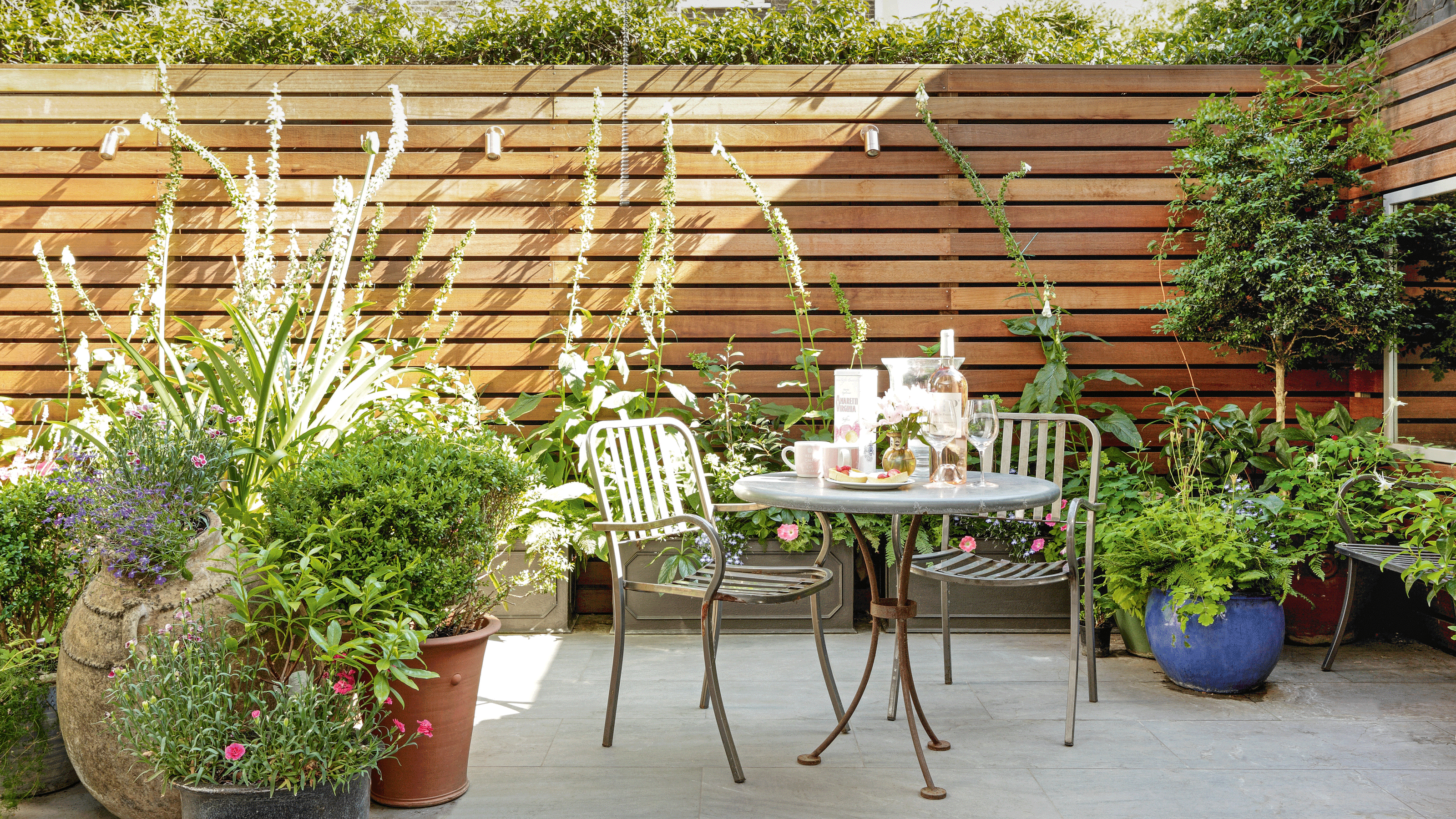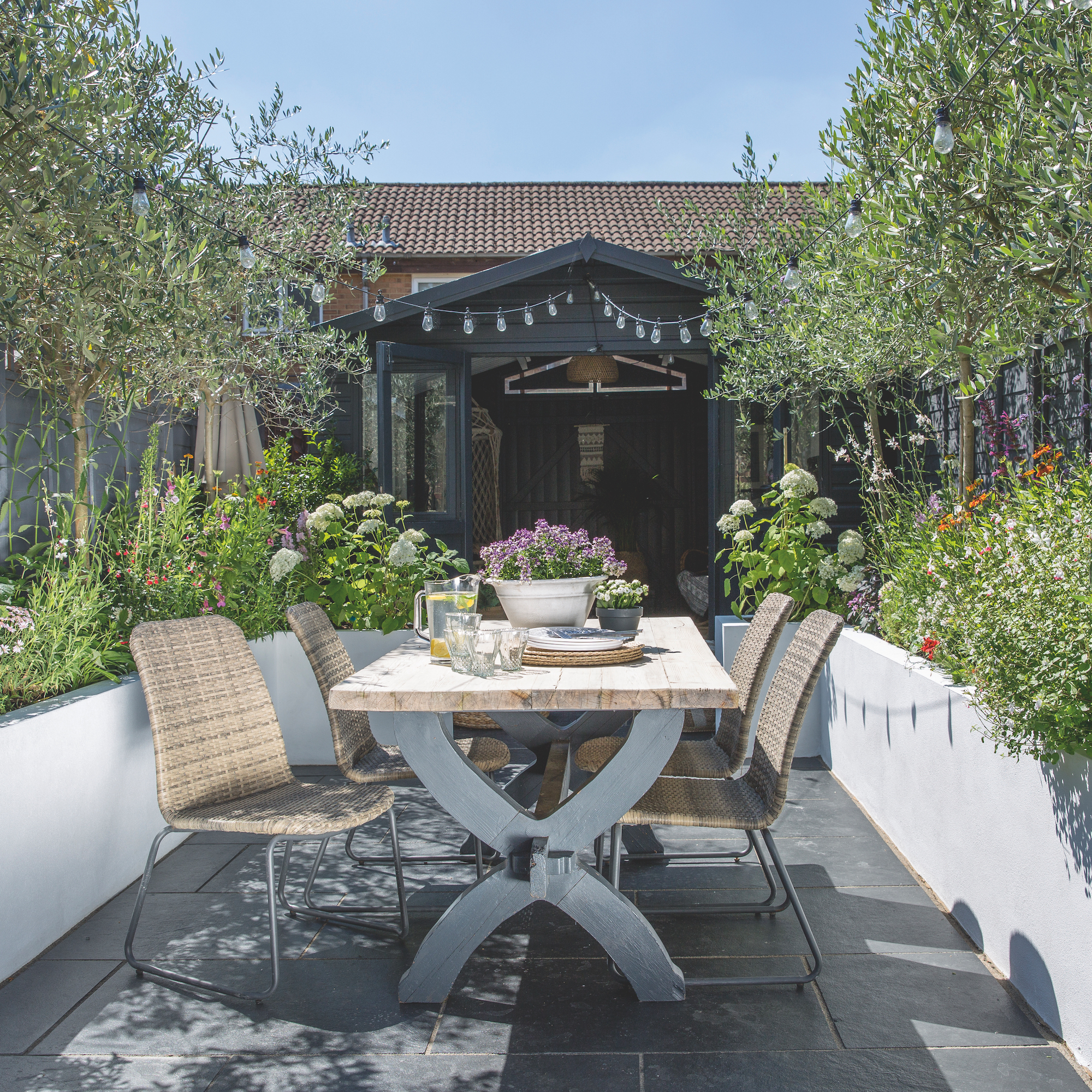Small garden screening ideas – 10 ways to add privacy and interest
From creating zones to incorporating more greenery, the experts highlight the very best options


Small gardens are often the most in need of a little privacy if you've been squished into a piece of land alongside a number of neighbours. When considering the perfect small garden screening idea if needs to keep out noisy onlookers, without making you feel hemmed into an already small space.
While there is a wide variety of garden screening ideas, not all of them are suitable for small garden ideas. If you're on the hunt for a stylish, streamlined and beautiful space, we've rounded up some inspired options with tips from garden design experts to make the most of your limited outdoor space.
So, whether you’re looking for a more affordable and fuss-free option, such as potted bamboo, or a more permanent solution, like a pergola.
Small garden screening ideas
‘The quickest and most affordable way to add privacy to a small garden is by using screens and trellises,’ explains Reilly Gray, Co-Founder of Suns Lifestyle. ‘They offer a great solution for adding privacy, but can also help create zones throughout the garden too.’
And because they can be made from a range of different materials – including wood, metal or greenery – screening is one of the most versatile decisions we can make for our garden.
The following small garden screening ideas not only add a layer of privacy but can also add some serious style and interest to any space.
1. Install a living walls

You may not realise it but not thinking vertically in your garden can lead to a lot of underutilised or unused space. Plus, ‘most problems with garden privacy come from neighbours being able to look into your outdoor space from above,’ explains Robert Quinton, Owner of Construction Megastore. This is when living walls or vertical garden ideas can really come in handy.
Get the Ideal Home Newsletter
Sign up to our newsletter for style and decor inspiration, house makeovers, project advice and more.
Not only do they provide privacy but they also add a lush, green backdrop to your garden or outdoor space. ‘You can plant a variety of climbers, such as ivy, jasmine, or climbing roses, in wall-mounted containers or specially designed vertical planters,’ Robert continues.
2. Zone with trellises

For those looking to split their garden into distinct zones, trellis dividers can certainly come in handy. A garden trellis ideas can also make a small garden look bigger, as again, you’re utilising vertical space and drawing the eye upward.
‘Climbing plants like clematis, honeysuckle, or ivy are a beautiful and natural way to screen off unwanted views,’ on a trellis, according to Glen Peskett, DIY Expert and Owner of Saxton Blades. The great thing is you can play around with different plants to see what works best for your outdoor space.
3. Hide with bamboo screens

Using bamboo is one of our favourite zen garden ideas, with you being able to choose between planted bamboo or pre-made bamboo screening, depending on your taste and budget.
Robert agrees. ‘Bamboo screens are versatile, sustainable, and ideal for creating a natural barrier in small gardens as it grows quickly and can be easily contained in containers or troughs.’
4. Add character with freestanding screens

If you’re looking for a screen that you can move around easily, a freestanding screen gives you a lot of options when it comes to positioning and repositioning it in your small garden. Plus, you can choose from a variety of different designs and materials.
We personally appreciate the use of a floral or leaf panel to add an interesting backdrop to your outdoor space. While some freestanding screens even come with planters attached to provide you with extra growing space.
5. Make the most of hedges

A hedge is one of the most widely utilised small garden screening ideas and for good reason. Thankfully ‘there is a wide array of hedges and shrubs out there that would make a great garden screen, whether you’re after a glossy evergreen border or something with floral and fragrant foliage,’ says Tom Kitching, Henchman’s Executive Chairman.
But if you’re looking for a more low-maintenance screen, a faux or artificial hedge could be the better choice for you. Made from UV-resistant materials that closely mimic the appearance of real foliage, without the maintenance requirements, ‘place them strategically along the boundaries of your garden to create a lush and verdant enclosure,’ Robert affirms.
6. Install a pergola

Whether you have room to have a freestanding pergola idea or one that’s fixed against your property, this screening idea is a popular choice for adding privacy and creating definition in a garden, regardless of how much space you have to play with.
‘Installing a pergola and adorning it with climbing plants was ill not only mean you have a new, functional feature in your small garden, but it will also act as a screen,’ Robert reveals. ‘Choose a compact pergola design that fits well within your small garden space before training climbing plants like wisteria, clematis, or honeysuckle to weave through the structure, providing both shade and privacy.’
7. Look to corten steel screens

If you’re looking to add personality to your small garden, a corten steel screen might be the option for you. Plus, these weather-resistant panels develop a rusty patina over time, adding character to your garden.
And in many cases corten steel screens can be customised with intricate patterns or laser-cut designs, whether they’re a standalone partition or incorporated into existing screening or fencing.
8. Be creative with grasses

If you’re simply looking to section off certain areas of your garden, particularly if you have a smaller footprint to work with, tall grasses can be another option, while adding visual interest.
‘Ornamental grasses can grow over 2m high and tend to be easy to care for. This makes them a low-maintenance option for naturally screening small gardens,’ says MyJobQuote.co.uk’s Gardening Expert, Fiona Jenkins. ‘Pink pampas grass, Chinese silver grass, New Zealand flax and flax lily are just a few of the options you could try.’
9. Cover with shade sails

A shade sail can have a number of benefits, from protecting you and your family from the midday sun, to creating a secluded space. They’re also quick and easy to assemble and can be added to an existing gazebo or patio area.
In addition to this, there are retractable options, which ‘can be adjusted for different levels of coverage and add a modern touch to your garden,’ Glen admits. So, you can really customise this type of garden shade idea.
10. Add layered planting

‘Compact, upright trees do a good job of screening gardens without needing much space,’ Fiona admits. And there are a number of different trees, shrubs and plants to choose from to screen your garden.
‘Magnolia shrubs, dwarf ornamental cherry trees, and smaller varieties of Japanese maple are just some of the trees and shrubs you can grow in containers,’ she details.
FAQs
How do I make my small garden feel more private?
No matter how big or small your garden is, you want it to feel private. There’s nothing worse than nosy neighbours or passersby looking in as you enjoy time outside. Which is why utilising screening and nature more generally, can help to create your own outdoor oasis.
You could even consider adding a water feature or outdoor curtains to mask any unwanted noise and add another layer of privacy.
Which plants or trees are best to screen off small gardens?
If you’d rather use plants or trees as a means to screen off your garden, there are a few varieties to keep in mind, according to the experts. ‘For small gardens, consider using compact evergreen shrubs like boxwoods or dwarf varieties of arborvitae, which provide year-round screening without taking up too much space,’ Robert explains.
‘Boxwood topiary hedges are also fantastic, as they are extremely dense, and can be cut down and shaped to your own design specifications,’ adds Ben Allen, Business Development Director at NeoTimber.
It’s ultimately worth checking the eventual height and spread of any tree or shrub that you plant, just to ensure that it won’t get too big. And ‘if you’re planning to position it near your house, go for container planting so you know the roots won’t interfere with your foundations,’ Fiona warns.

Ellis Cochrane has been a Freelance Contributor for Ideal Home since 2023. Ellis has been writing about homes, interiors and gardens for four years now, with her also contributing to House Beautiful, Country Living, Expert Reviews, Real Homes and Stylist.
-
 Move over, fences – dead hedges are the wild and wonderful alternative your garden will love and they're easier to build than you'd think
Move over, fences – dead hedges are the wild and wonderful alternative your garden will love and they're easier to build than you'd thinkThe perfect eco-friendly solution for small gardens
By Kayleigh Dray
-
 Did you know John Lewis can make your old curtains or rugs look like new? Their repair service is now available in all stores
Did you know John Lewis can make your old curtains or rugs look like new? Their repair service is now available in all storesJohn Lewis has added another string to its bow, and it's great news for your old homeware
By Kezia Reynolds
-
 This beautiful mixing bowl is the unexpected star of so many kitchens – including Mary Berry's and the Bake Off tent
This beautiful mixing bowl is the unexpected star of so many kitchens – including Mary Berry's and the Bake Off tentThis earthenware bowl proves that you don't have to spend a huge amount for a classic kitchen addition
By Molly Cleary


